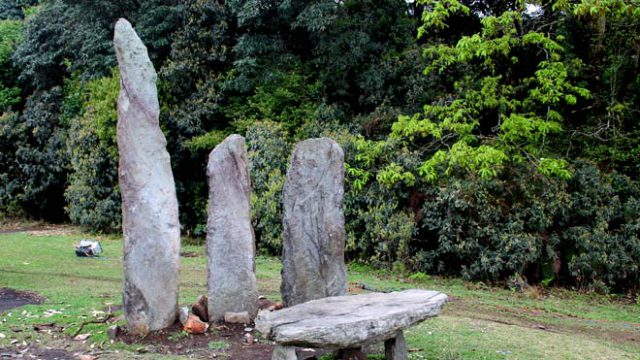I stood at the edge of a forest in the village of Mawphlang in the East Khasi Hills of Meghalaya, trying to get rid of negative thoughts before entering. This was no ordinary forest, you see, but home to a protective deity called U Ryngkew U Basa, revered by the Chief and Elders of the village to protect it from all harm. If anyone enters with bad intentions, they face dire consequences. A sacred grove or Law Kyntang, this forest has stood for at least 1,000 years and one of the reasons the forest still survives is because cuttting down any tree or branch here is taboo. Nature holds much significance in traditional Khasi culture and the spirit of conservation is deeply embedded in the people through a complex social matrix of religious beliefs. According to a Khasi saying, a village (hima) has no identity without its own sacred grove.
Covering almost 80 hectares, the Mawphlang Sacred Grove is a treasure trove of rare medicinal trees and plants like the English yew, the Chinese sumac, chinquapin, etc. It is also home to several species of trees that work as climate indicators, such as the Japanese blue oak and griffitti. In total, there are about 450 species of trees and plants in this forest as well as rare species of animals and birds. The biodiversity of this community-protected forest is impressive.

The forest also serves as an important ritual site for the people of Hima Mawphlang who perform various thanksgiving and blessing ceremonies in the area. This has evidently been going on for a while, attested by scattered mounds of ritual stones and menhirs, some of which are over 900 years old!




